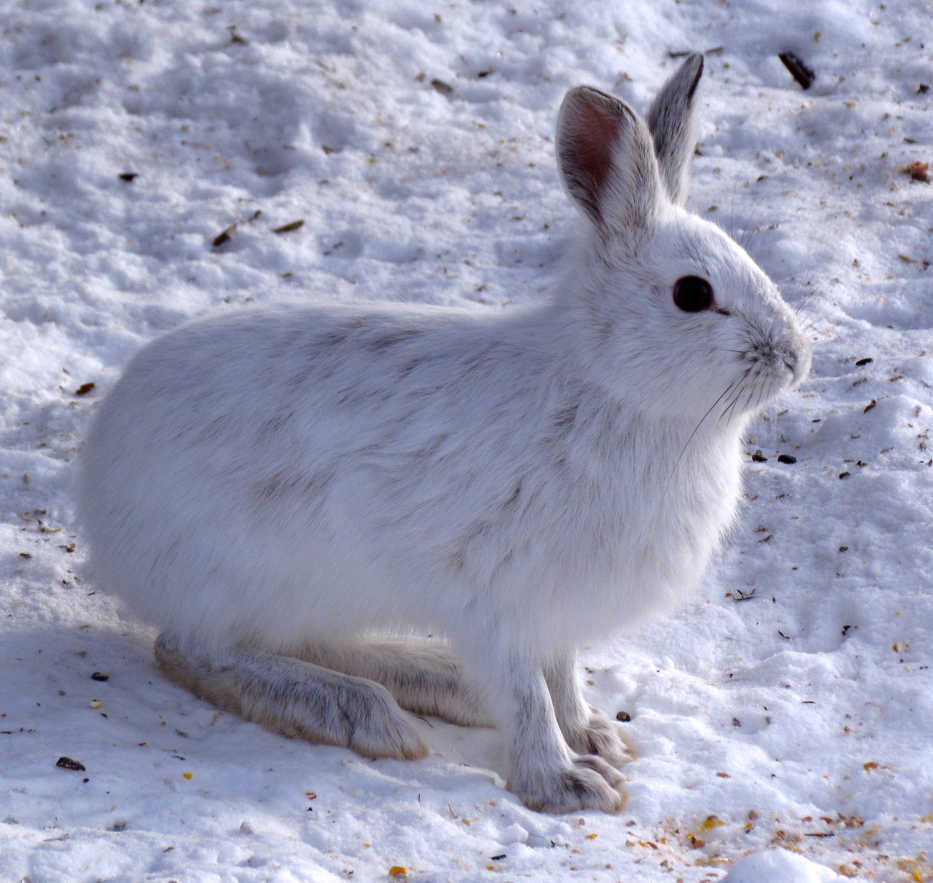Throughout fall and early winter, a short-tailed weasel has been making my afternoon schedule more interesting. As I wait for my son to finish his day at elementary school, I have lucky days where I see the weasel working the edges of the parking lot.
Short-tailed weasels, also known as ermine, are small mammals with thin, long bodies. They are fierce hunters that prey mainly on voles. Before this recent snowfall, the weasel was easy to spot because it was stark white against the background of brown grass and black pavement.
Short-tailed weasels molt from a sandy brown back with a white belly to a white coat with a black tipped tail. Several animal species on the Kenai Peninsula undergo seasonal color changes to blend into snowy conditions. Three species of ptarmigan, the least weasel, and snowshoe hare also switch to white for the winter months. White fur or feathers provide camouflage in the winter, which should help these animals hide from predators and possibly be more effective hunters. However, as all hunters know, camouflage only works when it matches the environmental conditions.
Phenology is a branch of science that focuses on how climate affects the timing and seasonality of biological events such as migration, hibernation, and molting. Plant and animals that are not in sync with the climate, a phenomenon called phenological mismatch, may not be as healthy or successful. Animals turning white before snow can provide cover is an example of a phenological mismatch. Over the past 100 years, the average duration and extent of snow cover has decreased in North America. Snow cover can come later and leave earlier than it has in the past.
Animals have some capacity to adapt to changing snow conditions. Marketa Zimova recently received her master’s degree from the University of Montana for a graduate study that explored the ways snowshoe hares might respond to changing snow conditions. Individual animals may be able to change the timing of molt or change their behaviors, for example hiding in thicker cover, when their fur color is out of sync with the snow conditions.
Zimova, and her advising professor Dr. Scott Mills, recently published a paper in which they did not find evidence that snowshoe hares changed the timing or rate of their molt in years with very different snow conditions. Zimova also did not find evidence that snowshoe hares changed their behavior when their white coats made them more conspicuous and vulnerable to predation. Hares freeze in their tracks when threatened to enhance the likelihood that they will not be detected by a predator. Zimova found that hares neither flushed sooner nor chose places with better cover for resting sites when their coats were out of sync with snow conditions.
In contrast, ptarmigan do change their behavior in different snow conditions. Male rock ptarmigan, which molt later than females, will soil their feathers to become more cryptic when snow melts in the spring.
Another way a local population could sync molt phenology to changing snow conditions is natural selection. In this scenario, the genetic make-up of individual hares would cause them to molt at different times and at different rates. Individuals with bad timing or who molt quickly would be more likely to be eaten. Over time, the molt timing of the population would shift.
There is evidence that snowshoe hare populations do become adapted to local conditions. Across their range, different populations exhibit variability in the timing of the molt and in the resulting color. For example, snowshoe hares that live in the milder climate of the Washington and Oregon coast remain brown all year. Zimova did find that hare with fur color that was mismatched to snow conditions were less likely to survive and this suggests there would be strong selection.
For populations to adapt to new conditions through natural selection, differences must exist between individuals. These differences in individuals depend on genetic diversity. Sometimes, unique individuals show up on the landscape. In 2004, an abnormal moose with patchy white fur was photographed in Soldotna and the picture was run in a Peninsula Clarion story. The moose’s coat was likely due to her unique genetic makeup, but not related to phenology.
Seasonal color changes in hares and weasels are caused by hormonal changes induced by the amount of daylight. However, the amount of daylight needed to start the change differs between individuals because of their unique genetic makeup. As climate and other habitat conditions change, maintaining genetic diversity becomes an evolutionary bet-hedging strategy. Unique individuals that are not successful today may become the most successful in novel, future conditions.
Dr. Magness is a landscape ecologist at the Kenai National Wildlife Refuge. Visit http://www.fws.gov/refuge/kenai/ for more information about the Refuge.

